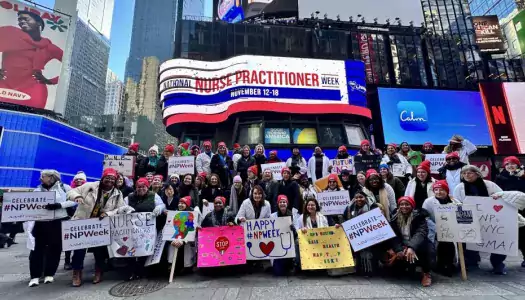Do you have daily or weekly rituals?
Maybe a morning walk, journaling, or a quiet moment with coffee. Or an evening run or bath. Saturday night dinner with your best friends or movie night with the kids. Sunday morning at church or afternoon at grandma’s.
When we don’t practice these rituals, the day just doesn’t feel right.
But we don’t practice rituals like we used to. Blame the machines. Seriously, addictive technology is part of the problem, but the decline of traditional institutions is another.
Associations can answer the individual and collective need for rituals.
What we mean by “rituals”
The word “ritual” has a religious connotation for some, but rituals aren’t solely religious. However, there’s something sacred in a secular sense about them. You guard their place in your life and calendar.
I’ve been thinking about the role of rituals in our individual and collective lives after reading a post by cultural critic and music historian Ted Gioia. Afterwards, I went down the rabbit hole with more articles and books about rituals than I ever would’ve imagined.
Here’s what I learned about rituals.
Robert Fulghum, who wrote the book, All I Really Need to Know I Learned in Kindergarten, described rituals as “repeated patterns of meaningful acts.”
“Ritual is mindfulness in action,” according to life coach and doula Jessie Harrold. “It is simply action imbued with meaning and intention; a way to slow down time and truly notice our lives.”
Rituals are deliberate, repetitive actions with a transformative and empowering purpose. A book review comment summed it up:
“People gravitate towards habits to avoid thinking. People gravitate towards rituals to improve living.”
What we lost when rituals disappeared
In his book, The Disappearance of Rituals, philosopher Byung-Chul Han said the erosion of religious, civic, and social customs and institutions caused the loss of rituals in our frenetic, technology-driven society. This loss contributes to a sense of disconnection, alienation, and disorientation. It disrupts social bonds, weakens cultural identity, and erodes a sense of belonging.
Ted Gioia said, “In an overly digitized world, people embrace with intensity the few remaining ritualistic activities available to them.” Holidays like Halloween and Mardi Gras “originated as religious observances but are more vehemently pursued by those engulfed in secular online culture—because they need this release the most.”
“The phone is the enemy of ritual,” he said. “Instead of the ceaseless quest for novelty embedded in scrolling, ritual offers the deeper satisfaction of mindful repetition… an antidote to the more toxic aspects of tech-dominated society.”
Han said rituals create meaningful spaces and connect us to our shared humanity. They provide a sense of belonging and identity, honing our appreciation for the present moment and deepening our connection to the world around us. You can see why it’s worth exploring how to bring rituals to your members and/or learners.
Communal rituals for members
A comment on Gioia’s post said, “(re)Creating communal rituals is the next frontier.” So here we are, explorers.
Associations are a natural setting for rituals that foster a sense of belonging, social solidarity, and community. Your most vulnerable communities need rituals the most, for example, members who are:
- Stressed or burned out
- Out of work
- Just starting out in a career or practice
- Going through stressful change
- Entering a new phase of life
- Feeling isolated while working remotely
In his book, The Ritual Effect, Harvard Business School professor Michael Norton said people rely on rituals to relax and bond with others. Researchers found that teams with simple rituals find more meaning in their work.
Members would appreciate the opportunity to engage in meaningful and shared experiences that promote a sense of belonging and social cohesion. Put together a working group to brainstorm ideas for rituals that make sense in a professional context, such as:
- Weekly or biweekly coffee chats, lunch and learns, news and nosh, online community share, or peer learning circle—activities in which members enjoy camaraderie with others who made time to join them.
- Monthly social or educational event held on first Fridays, like a book club, mentoring circle, professional or personal interest group, or solution room
- Association holidays, like awareness weeks dedicated to honoring and learning about a special topic or person’s work, something a community celebrates together
What repeatable activity would members look forward to and come to rely upon for their community or learning fix?

Build rituals into learning experiences
Learning experience designer Srishti Sehgal said, “Think of rituals as the secret ingredients that infuse life and character into the learning process. They're the sprinkle of magic that transforms compulsory training into a memorable journey.”
She defines the essential elements of a ritual as purpose, repeatability, predictability, community, and flexibility. Here are her suggestions for building these elements into a learning experience.
Purpose
Imagine what you could do at the beginning of a learning session to:
- Reward desirable behaviors
- Build a sense of community
- Shift the mental state of your learner
- Cultivate self-awareness
- Create accountability
- Celebrate learning milestones and achievements
- Prime learners for a specific activity
For example, open webinars ten minutes early for those who want to chat with fellow attendees. Or start a session with a reflective question that has learners recall what they know or imagine possibilities.
Repeatability
Rituals are comforting, familiar, and reliable. Create repetition based on:
- Time: daily, weekly, or monthly
- Milestones: at the start or end of a module, program, or course
- Events: when someone asks a great question or has a brilliant new insight, when a course or cohort “graduates”
Predictability
Help learners reduce anxiety and create a sense of control with predictability in the ritual’s:
- Schedule
- Process
- Format
- Outcome
Community
Members want to develop relationships and feel a sense of belonging, especially while learning—that’s why they joined your association.
- Build support and accountability
- Create a sense of belonging
- Expose people to diverse perspectives
- Facilitate peer-to-peer learning
- Celebrate achievements, milestones, and progress together
Flexibility
Take an agile approach to ritual. Sehgal said, “A flexible ritual adapts to the evolving needs and circumstances of your learners and experience.”
- Co-create rituals with your members/learners
- Run small experiments and keep what sticks
- Ask for periodic feedback
- Make changes based on feedback
Start by testing rituals with a learning cohort or weekly/biweekly virtual meetup attendees.
Norton recommends taking an outsider’s perspective. Observe what’s already going on in your membership or in your educational programs. “Find norms and expand them into rituals, or even to bolster what’s already happening.”
Ideally, learners and members count on these rituals, look forward to them, and appreciate their impact. Norton said, “Over time, rituals themselves become meaningful to us—a sense of ‘this is how we do things around here.’” That sense of “we” is a wonderful feeling to nurture in a society that’s seen many of its meaningful rituals fade away.






